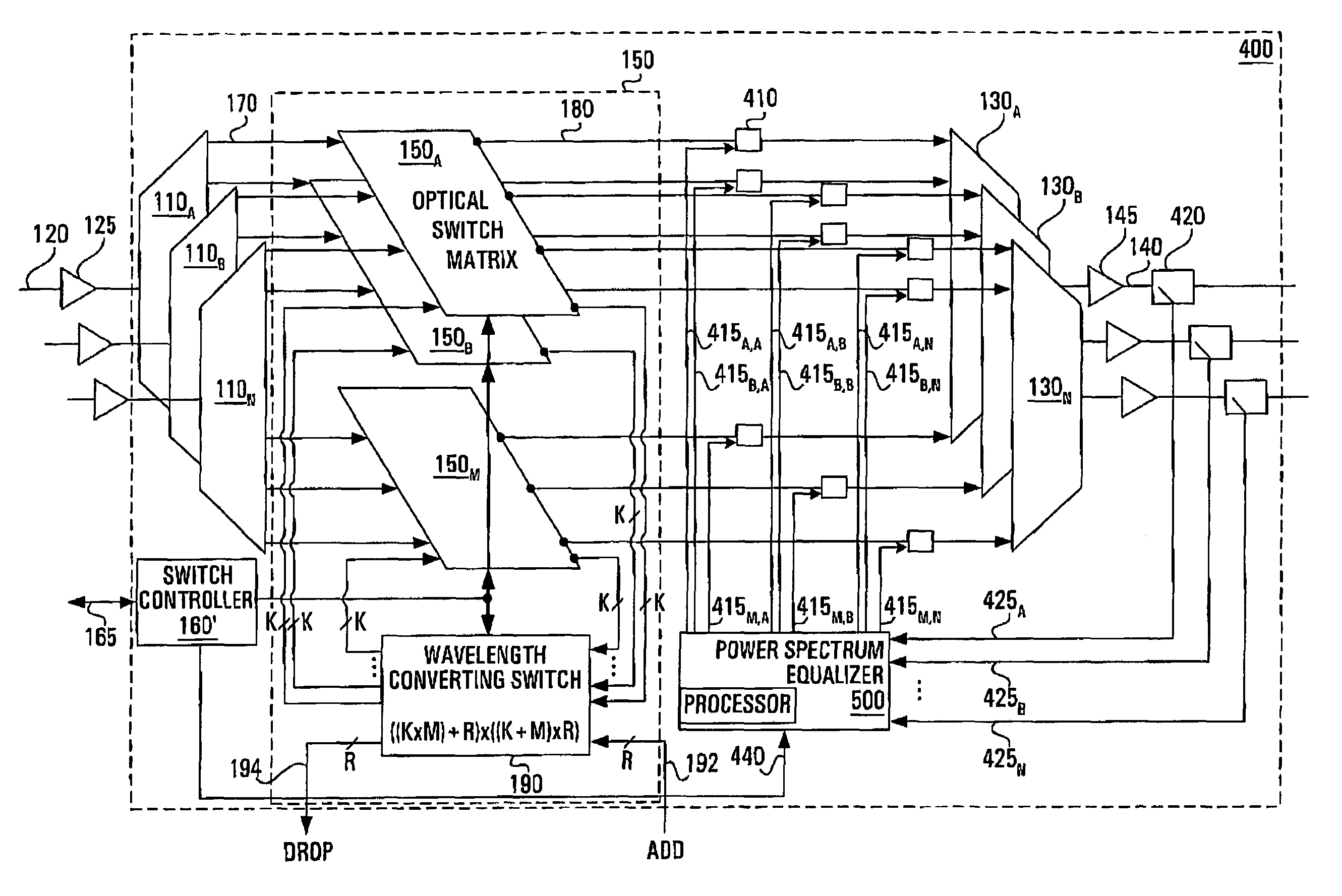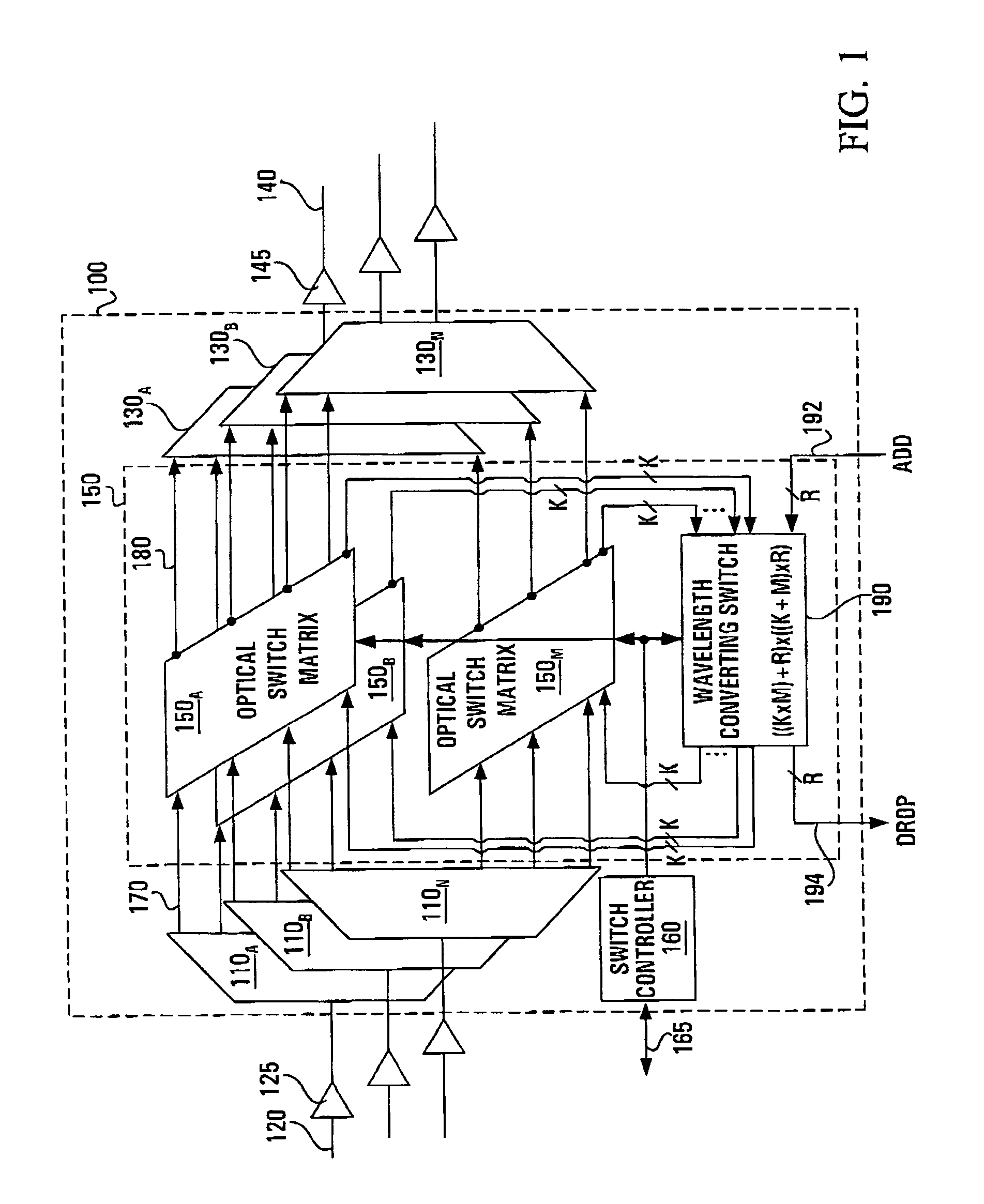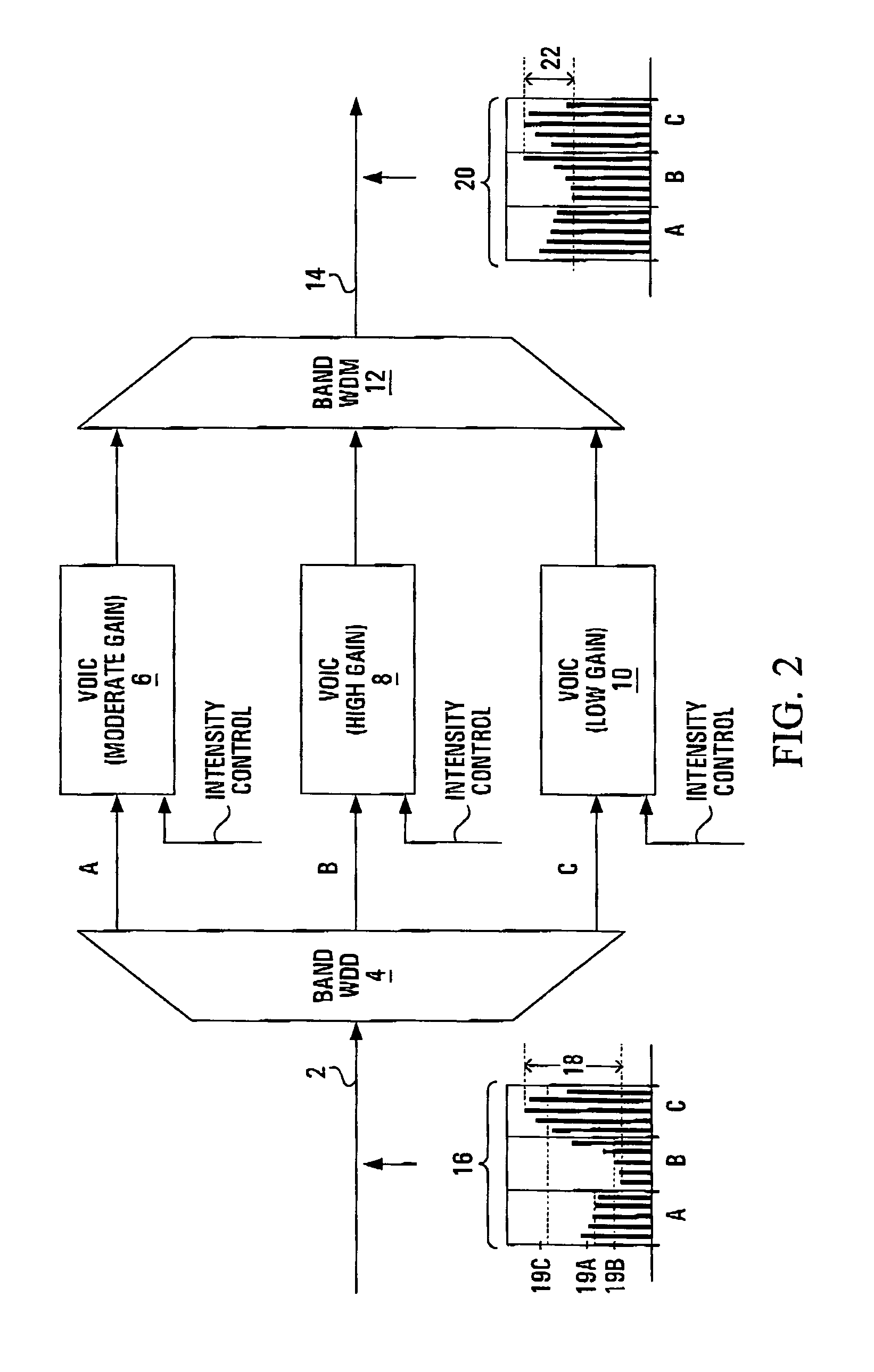Optical switch with power equalization
a technology applied in the field of optical switches and cross-connects, can solve problems such as reducing the complexity of equalization systems, and achieve the effect of increasing the complexity of switch design
- Summary
- Abstract
- Description
- Claims
- Application Information
AI Technical Summary
Benefits of technology
Problems solved by technology
Method used
Image
Examples
Embodiment Construction
[0090]With reference to FIG. 4, there is shown a photonic switch 400 according to an embodiment of the present invention. The photonic switch 400 resembles the photonic switch 100 of FIG. 1 in that it retains the basic structure including the WDD devices 110A-110N, the WDM devices 130A-130N and the photonic switch core 150.
[0091]The photonic switch 400 of the invention additionally comprises a plurality (M×N) of variable optical intensity controllers (VOICs) 410 respectively positioned in each of the demuxed switched optical paths 180. Thus, each of the VOICs 410 is associated with a respective switched individual optical carrier signal that emerges from the photonic switch core 150 along a respective one of the demuxed switched optical paths 180.
[0092]The VOICs 410 are used for providing intensity control in the form of either attenuation or amplification. Thus, each of the VOICs 410 can either be a variable optical attenuator or a variable optical amplifier, depending on the opera...
PUM
 Login to View More
Login to View More Abstract
Description
Claims
Application Information
 Login to View More
Login to View More - R&D
- Intellectual Property
- Life Sciences
- Materials
- Tech Scout
- Unparalleled Data Quality
- Higher Quality Content
- 60% Fewer Hallucinations
Browse by: Latest US Patents, China's latest patents, Technical Efficacy Thesaurus, Application Domain, Technology Topic, Popular Technical Reports.
© 2025 PatSnap. All rights reserved.Legal|Privacy policy|Modern Slavery Act Transparency Statement|Sitemap|About US| Contact US: help@patsnap.com



